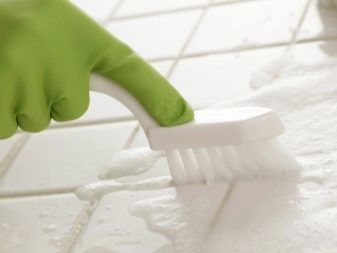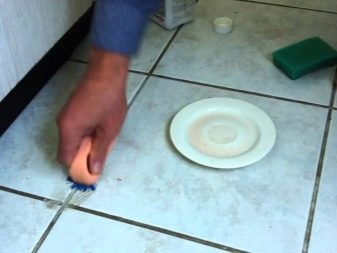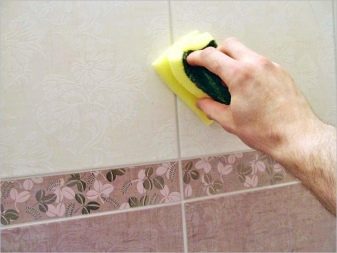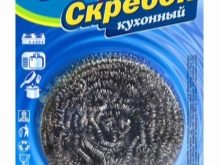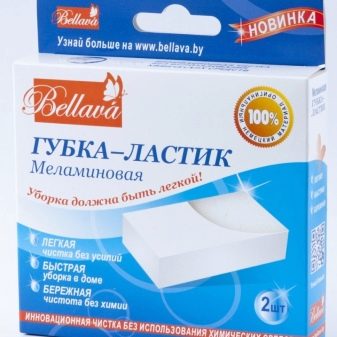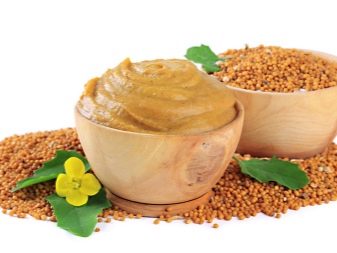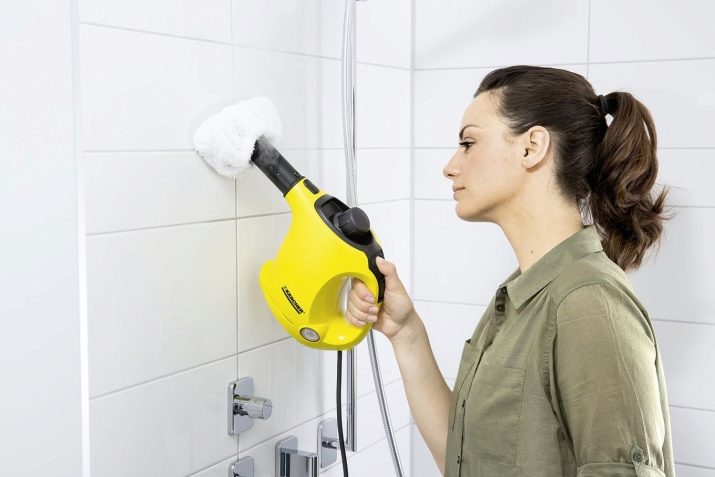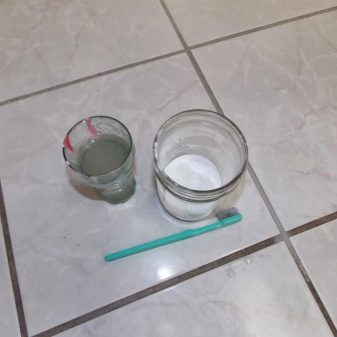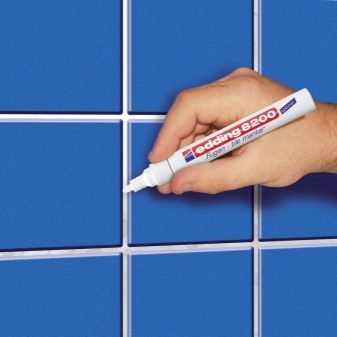Clean up the bathroom: how to clean the joints between the tiles?

The tile in a bathroom can look expensive and elegant. But over time, she risks losing her appeal. High humidity, poor ventilation and temperature fluctuations often affect the appearance of the tile. To return a glossy shine and a neat look to such a coating, it is necessary not only to launder to shine and rub the tile itself, but also to update the inter-tile seams.
What are the spots?
Over time, dirt stains appear on the tile: lime deposits, traces of shampoo, and even cleaning products, but, much more seriously, from mold and fungus. If little time is spent on caring for such a coating, traces of black deposits become very noticeable. This blackness is a sign of the spread of mold and mildew.
Why wash the tile joints?
It is impossible to look at this indifferently not only because the tile looks dirty and unkempt, but also because the presence of “self-appointed neighbors” (mold and fungus) adversely affects the condition of all households. The fungus can not penetrate the immune protection of a healthy person, however, if the body is weakened, the spores penetrate the body through the skin and respiratory tract, so the closest attention should be paid to the cleaning of interstitial joints and do not postpone general cleaning.
How to wash?
Ways to clean tile there are many. To do this, you can choose a modern detergent. Fortunately, the market has a large range of effective drugs. You can also use traditional methods in the battle for perfect cleanliness in the bathroom, as well as clean or clean the tiles mechanically using scrapers, spatulas and other simple devices.
How can I clean quickly?
Contaminated tile spacing is the first thing you notice in the bathroom, as in the kitchen. If initially they were white, and now they have acquired a grayish or yellow color, then try to use the achievements of the chemical industry.
To clean the seams using household chemicals, it is better to choose a potent agent, since the dirt between the tiles in the bathroom, as a rule, clogs up very deeply, and chemical solutions that act gently, work well with the tile itself, but do not give a complete result in the fight against inter tile pollution.
The basis of such chemicals are strong acids. To clear the tile gaps, the chemical mixture is applied to the seams and wait for it to work. After some time, the seams are washed with warm water. If necessary, you can wipe off the remnants of dirt with a brush
It is also possible to restore the aesthetic appearance of the tiled coating mechanically, although this process is laborious, requiring thoroughness and caution. But unlike chemical means, the tool penetrates to any depth of the seam, in which dirt has lodged.
In this case, such simple tools as a kitchen scraper or sandpaper will be useful. To effectively remove dirt in the seams on the floor, you can use a non-rigid brush on the metal. Although in this case there is a risk to spoil the flooring, as this tool removes the old grout with strips, and they may be noticeable. It is safer to use a semi-circular chisel, which is used in the work of woodcarvers.
In severe cases, the grout must be removed completely, and then apply a new one.You should also use special formulations to protect it.
Remove dirt
To get rid of traces of lime on the tile and in its joints, you can use special household chemicals that are applied with a sponge or brush, wait a few minutes and rinse with water:
- Modern means of removing dirt from tile is melamine sponge. It is created from a special material (a modern kind of plastic), which, like an eraser, cleans solid surfaces from contamination, which makes it possible not to use chemical agents when aiming cleanliness;
- If you do not want extra spending, or you do not trust the special store tools, use the fact that there is definitely on hand at any hostess. Can do a mixture of soda and hydrogen peroxide. Given its required volume, it is necessary to select the composition in such a way that the four parts of soda have three parts of peroxide. If desired, add the product to this mixture, which you use to make it easier to wash the dishes. It perfectly removes fat. The resulting composition should be applied to the tile. After a couple of hours, it remains to clean the surface of the tile and seams with a brush and wash it thoroughly;
- If this recipe does not suit you, make a solution. toothpaste, mustard and lemon juice. For fidelity, it is a good idea to supplement this combination with ammonia. Compound coat the seams and incubated for 10-20 minutes. Then rinse thoroughly with water;
- A reliable combination is considered a solution. lemon, vinegar and baking soda. For 6 glasses of water, take half a glass of soda and a third of a glass of vinegar, then add the same amount of lemon juice. Apply the liquid to the seams for 10-15 minutes. For the result to be truly reliable, it is best to help the liquid mixture penetrate the grout with a brush. Such a procedure must be carried out at least 2-3 times, in order to surely get rid of all the accumulated dirt.
It is important to take precautions when processing tiles, since almost all effective formulations (even homemade, even store) can burn the skin, and are harmful to the respiratory system, so you need to work in rubber gloves and a protective mask.
The door to the bathroom at the same time must be open, as well as at least one window in the apartment.
Remove the fungus
If, when processing tiles in the bathroom, the hostesses take on "heavy artillery", then, as a rule, it is no longer a matter of simply removing dirt, but of fighting fungus. The same lemon, vinegar, soda and hydrogen peroxide give a certain effect in the fight against this scourge:
- for example, an effective antifungal agent can be prepared from improvised means: mix ammonia and vinegar (a tablespoon of both), add a teaspoon of an emollient, which is used when washing clothes, and two-thirds cup of water. All this mix and work the seams of the composition with a stiff brush;
- You can use modern tools. The same special a felt-tip pen with waterproof dyewhich quickly kills a fungus and also hides the resulting color defects;
- If the black in the bathroom appeared recently, you can use chemical means, which include chlorine. This, for example, "White". It is used in folk recipes against the fungus, and independently. To achieve the desired effect, it is enough to process the entire tile with this fluid, including the seams;
- fit for business and oxygen bleach. It is diluted in warm water at a 1: 1 ratio. The tile is treated with a sponge with a tool, carefully spreading the tile joints. Then leave for an hour and a half. During this time, the active substances penetrate into hard-to-reach places of the tile covering and kill harmful microorganisms and fungus. After completion of the process, the chemical itself is quietly removed with a stiff brush.
Some people react very poorly to chlorine-containing and other chemicals.If there is a possibility that someone from the residents of the house will cater to the hospital bed because of this, then in the fight against the fungus, you can use the paoo cleaner. This appliance releases high-pressure steam. Thus, without the use of chemistry, you can reliably clean both the tile itself and the intermediate joints. The steam jet softens the dirt, kills the fungus and other bacilli.
There are also completely neglected situations when the fungus in the seams “blooms with a double color”, and the grout itself is already crumbling.
There is no other way out, except how to remove it completely with the mold, and update the seams with the use of all preventive measures to prevent the re-spread of the fungus.
Tips and tricks
There are many types of tiles. Depending on what material you are dealing with, appropriate cleaning products should be selected:
- glazed tile does not tolerate acids. Contact with substances containing acidic components makes it fade;
- Matte tiles after cleaning must be treated with special mastic, which forms a film. It makes it possible for a long time not to get dirty from the tile surface
- if a mosaic or glass tile is used in the bathroom, you should not use potent agents containing a large percentage of alkali and acid;
- when cleaning the tile coating, it is preferable not to use granular powders and very hard brushes;
- Get an epoxy based grout. Such materials are resistant to the penetration of dirt, as well as to the formation of fungus and mold;
- regular maintenance of tiles with chemicals is necessary from the beginning of its operation. The use of special tools is most effective when the contaminants are not deeply embedded in interstitial seams and are not rooted in them.
- the systematic use of special chemicals in the cleanliness of the bathroom will give the opportunity not to start this situation, and the tile will look like new for a long time;
- the state of the tiled covering directly depends on the microclimate in the bathroom. Care must be taken to ensure that this room is as dry as possible. A well-designed ventilation system will help ensure this; humid air must be forced out of the room. It is even better if the hood starts working when the lights are turned on in the bathroom;
- a simple rule should be developed: immediately after one of the households took a shower or bath, the tile is wiped with a rag, which absorbs water well, so that dampness does not linger in the inter tile joints;
- the walls under the tiles should not be cold, otherwise the formation of condensate is inevitable.
You will learn more about how to clean the seams between the tiles from the following video.
